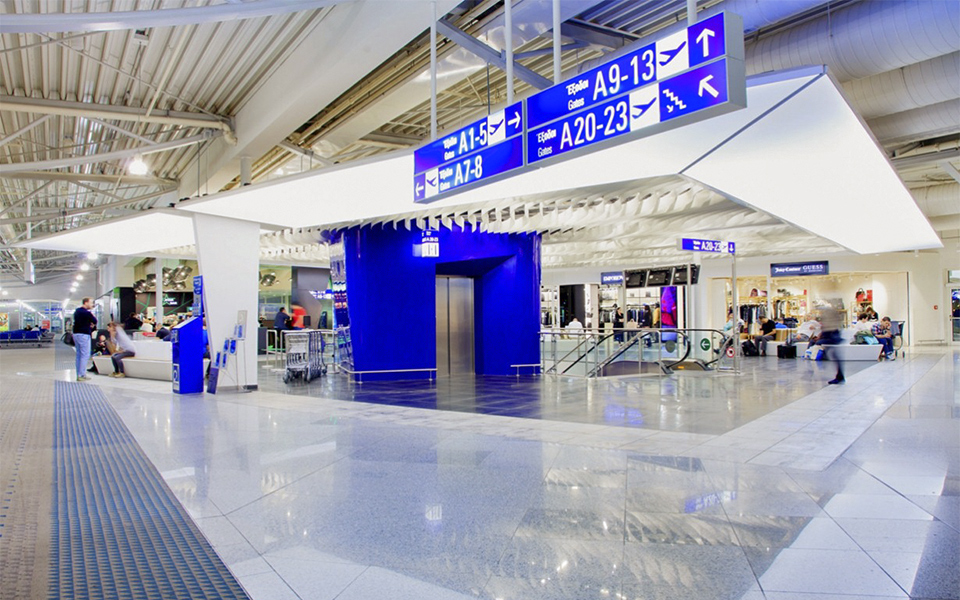Once upon a time, airplane tickets were made of paper. Today we store them on our phones. In the past to get on a plane one would have to have numerous interactions with employees: to check in, drop off bags, and go through security checks. There was even a time when smoking was allowed when in flight – a practice that has fortunately been consigned to the past.
Today it is possible to go from deciding on a trip to taking your seat without speaking to a single soul. The way we travel has changed radically and airports themselves must adapt to keep up.
That was one of the driving forces behind a recent major overhaul of Athens International Airport that was completed last month with the aim of improving its functionality, aesthetics, and travelers’ overall experiences.
Thanks to the renovation work the airport that handled 20 million passengers in 2016 is now capable of coping with up to 26 million. The cost of the work came in at 35 million euros, with 15 million paid by Athens International Airport S.A. and the remaining 20 million euros coming from 3rd parties – primarily the shops and businesses active in the airport.
The commercial space of the airport now covers 11,000 square meters and the renovation work saw the addition of 21 outlets. In total the airport now has 126 commercial enterprises (64 retailers, 34 restaurants and cafes, and 28 service providers).
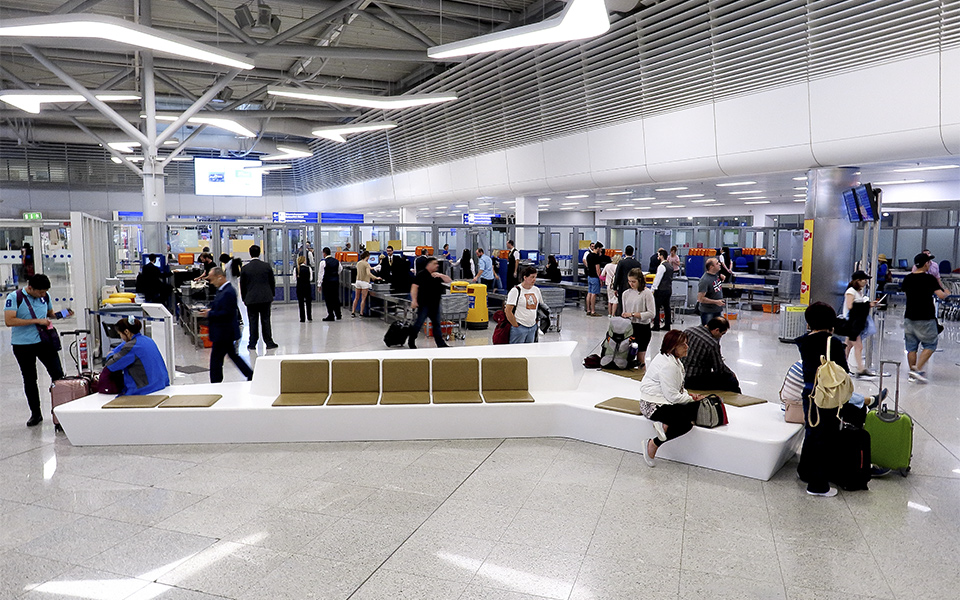
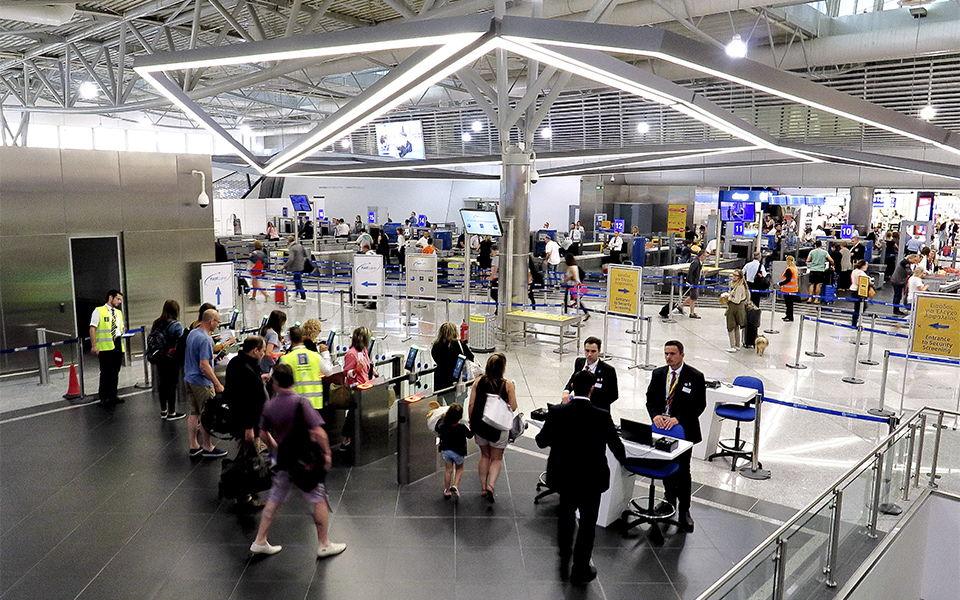
Security Upgrades
The most important modification to the airport is the installation of 2 centralized security filter points – one at the entrance of the Schengen area (with boarding card control and security) and at the non-Schengen area (with passport control and security). Previously, security checks were performed near the gates at disparate control points.
The new centralized filters allow the total separation of operational processes from passenger recreation in the airport. Passengers, after having left the centralized security controls behind, can now, comfortably and stress-free, explore and walk through the newly upgraded Schengen and non-Schengen areas.
With the new centralized system, the security filter points’ throughput has increased by 20% compared to the previous infrastructure. Similarly the efficiency of the transfer process has also been improved and transfer passengers can now reach their departure gate 10 minutes faster, according to AIA.
The airport is also being outfitted with additional automated machines for boarding card and passport checks for both arriving and departing passengers. From the end of June, passengers traveling to or from non-Schengen countries will be able to have their passports checked at automated gates (provided their passports have biometric data) which are expected to improve efficiency. Each automated gates can handle 80 passengers per hour, or 5,000 per day.
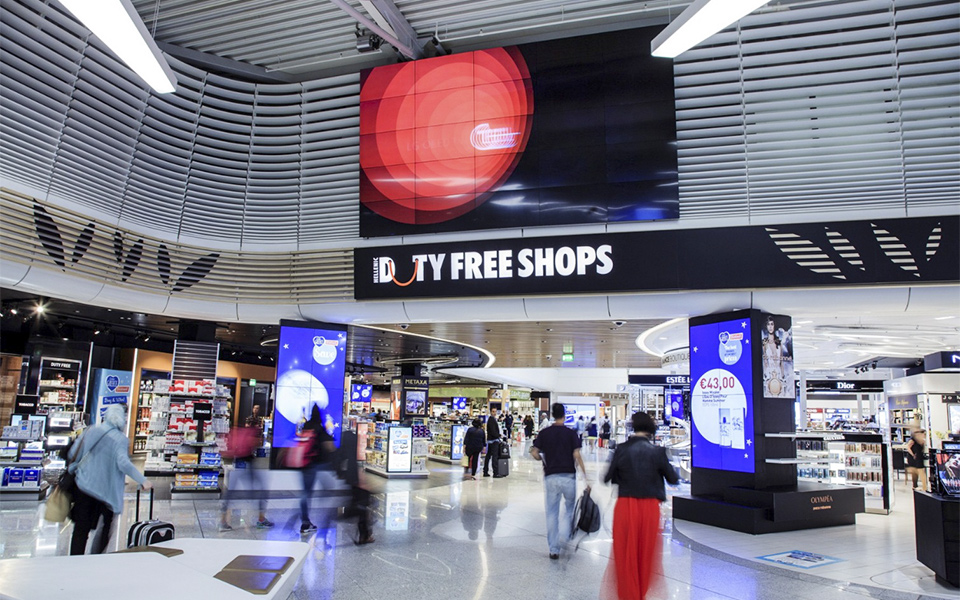
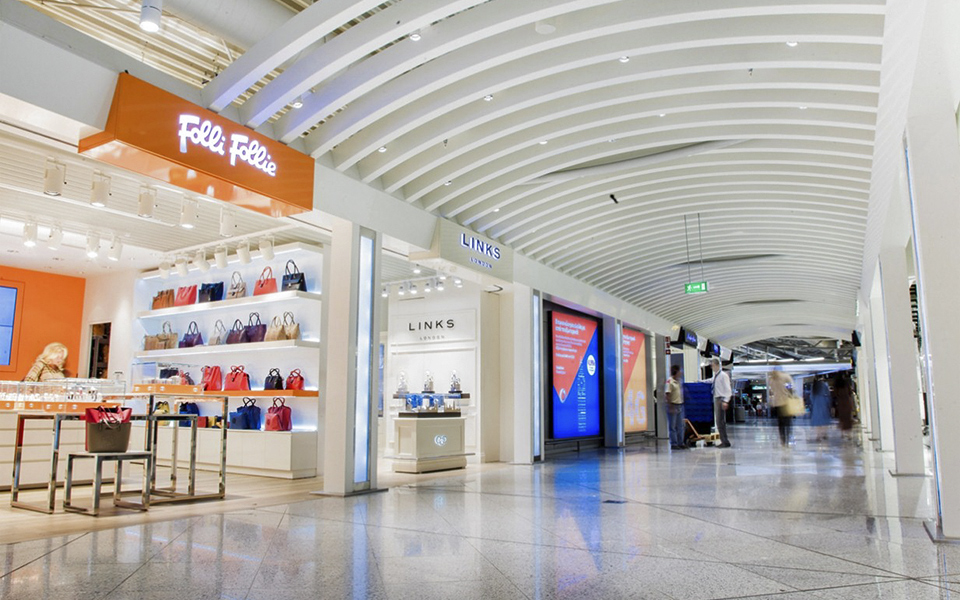
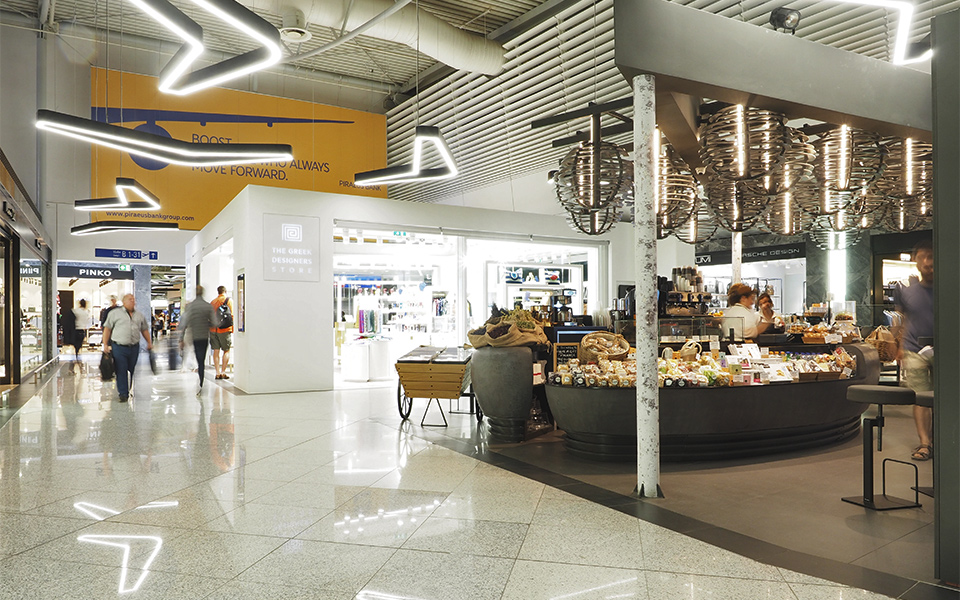
After the Checks a New Shopping Experience
Having left behind the centralized security filters, Schengen and non-Schengen passengers enter the new areas: new aesthetics and a large variety of products are intended to respond to the latest trends and expectations of Greek and international passengers. In particular the airport’s shopping centre reflects a new identity and an enhanced sense of “Greekness” with newly designed routes aimed to recreate elements of Athens.
Inspired by classical Greece, in the non-Schengen area, 3 separate commercial zones were created on the basis of a walkthrough format that starts from the “Agora” (Market). Passengers then walk along a route designed to resemble an Athenian high-street lined with shops, before coming to the ‘Square’ – an open area that leads on to the departure gates and which combines shopping, food and relaxed seating areas.
The newly-redesigned Schengen area has a similar layout, designed to mimic a walk in modern Athens. Passengers will pass through a ‘market’, ‘busy street’ and ‘Greek neighborhood’ before coming to the ‘square’ with numerous outlets offering a variety of Greek tastes and products.

